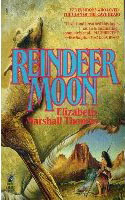|
Terms / Concepts
- ethnographic analogy
- band society
- hunting
- bow and (poisoned) arrow
- the poisons are made of the bettle that lives in certain marula
trees
- from the larvae of the Diamphidium beetle
- the poison is mixed with various plant ingredients to intensify
the effects of the poison on the nervous system of the animal
- digging stick (dibble; coa)
- pan (shallow water source)
- spoor (the track or trail of an animal)
- persistence hunting
- when casually hunting non cold-climate hunters worldwide
return home essentially empty-handed about 9 of 10 times
- but persistence hunting is very effective
- Ju/'hoansi
(!Kung San) Kin Terms -- Brian Schwimmer
- wert (house / hut site)
Notes
- Watch
- the relationship of the people to each other
- what the women do
- what the children do
- what the men do
- the relationship of the people to the earth
- their material cultural ( huts, tools . . . )
- their knowledge of the area, the animals, and technology
- what an archaeologist might discover if they came back in a 1000
years to investigate
- what wouldn't they find?
- Waterholes are considered owned by the headmen of bands, and one must
ask permission of the owner to drink
- Permission is always given for
the asking
- Tau would go into a long, deep trance when he served his people as
a "medicine man"
- Later on, a large creature, having a sudden
death, left a hollow
- Tau, because he was a medicine man, cut open the
giraffe
- "From the ceaseless labors of the women pecking and tugging at the
land comes most of the peoples' food."
- "The work of the women" is to gather roots, wild nuts, and
berries
- This is the kind of work that makes women strong and graceful,
and then old
- "Hunting is the work of men, their passion, and the passion of the
boys."
- To be good hunters boys must start early in life to learn to chase,
shoot and track the many different animals that live in the area
- boys are not taught to hunt
- here is little formal instruction, competition is rare, practice
is frequent
- Samko caught a mongoose years before he was to get the little
scars on his arms, breasts and forehead that would mean that he
was a man and able to marry
- Note how the video portrays the individual personalities of the four
hunters.
- Tau, "a natural hunter," also serves as the group's shaman, including
going into trance for them
- On the day that he consummated his marriage
shot and killed 5 wildebeests of a herd of 30, and brought home the
meat of 4 of them
- When they came upon the kudu that had been eaten by the scavengers
they broke the bones and ate the marrow.
- At night they were only 7 miles from where they were that morning,
but they had walked more than 30 miles.
- On the 13th day since their departure they came home, traveling 2
days from the butchering site to get there
- There was meat enough for
9 days
- But the success rate for hunters in general is more like 1 / 10
- As they worked they began to divide up the meat
- Each man took his
share and a share for his kinsmen
- Since it was an old man, Gau, whose
arrow had first wounded the giraffe it was his job to distribute the
meat to those who were not family to the hunters. He gave to his closest
kinsmen. And they in turn gave to their kinsmen, "and the meat
spread across the wert as a ripple across water, until in the afternoon
everyone was cooking and eating meat," so that by afternoon, everyone
was cooking and eating the meat.
- Note the discussion of the hunt: "Old men remembered, and young
men listened, and so the story of the hunt was told."
- The large stomachs of some of the people in the film are not due
to kwashiorkor, "a malnutrition disease, chiefly of children,
caused by severe protein and vitamin deficiency and characterized
by retarded growth, changes in pigmentation, potbelly, and anemia"
(Webster's New Universal Unabridged Dictionary")
Cultures
- !Kung San (AKA Khoisan,"Bushmen")
- they call themselves zhun/twasi, "ourselves"
Sites
Individuals
- Marshall, John
- Marshall, Lorna
- Thomas, Elizabeth M.
 
Publications / Bibliography
- Lee, Richard B. 1968. "What Hunters do for a Living, or, How to Make
Out on Scarce Resources," in Man the Hunter by Richard B. Lee
and Irven De Vore (eds.). Chicago: Aldine.
- Lee, Richard B. 1969. "!Kung Bushmen Subsistence: An Input-Output
Analysis," in Human Ecology: An Anthropological Reader by A.
P. Vayda (ed.). NY: Natural History Press.
- Lee, Richard B. 1972. "The !Kung Bushmen of Botswana," in Hunters
and Gathers Today by Marco G. Bicchieri (ed.). NY: Holt, Rinehart,
and Winston.
- Marshall, John. 1958. "Man as Hunter." Natural History 67:6:291-309;
67:7:376-395.
- Marshall, Lorna. 1965. "The !Kung Bushmen of the Kalahari Desert."
In Peoples of Africa. James L. Gibbs, Jr., ed., 241 - 278. New
York: Holt, Rinehart, and Winston.
- Thomas, Elizabeth M. 1959. The Harmless People. NY: Knopf,
Vintage.
- Sahlins, Marshall. "The
Original Affluent Society," from Stone Age Economics.
Chicago: Aldine and Atherton. 1972.
- Thomas, Elizabeth M. 1963. "Bushmen on the Kalahari." National
Geographic 123:6:866-888.
- Learning
Guide to the film The Gods Must Be Crazy
|

